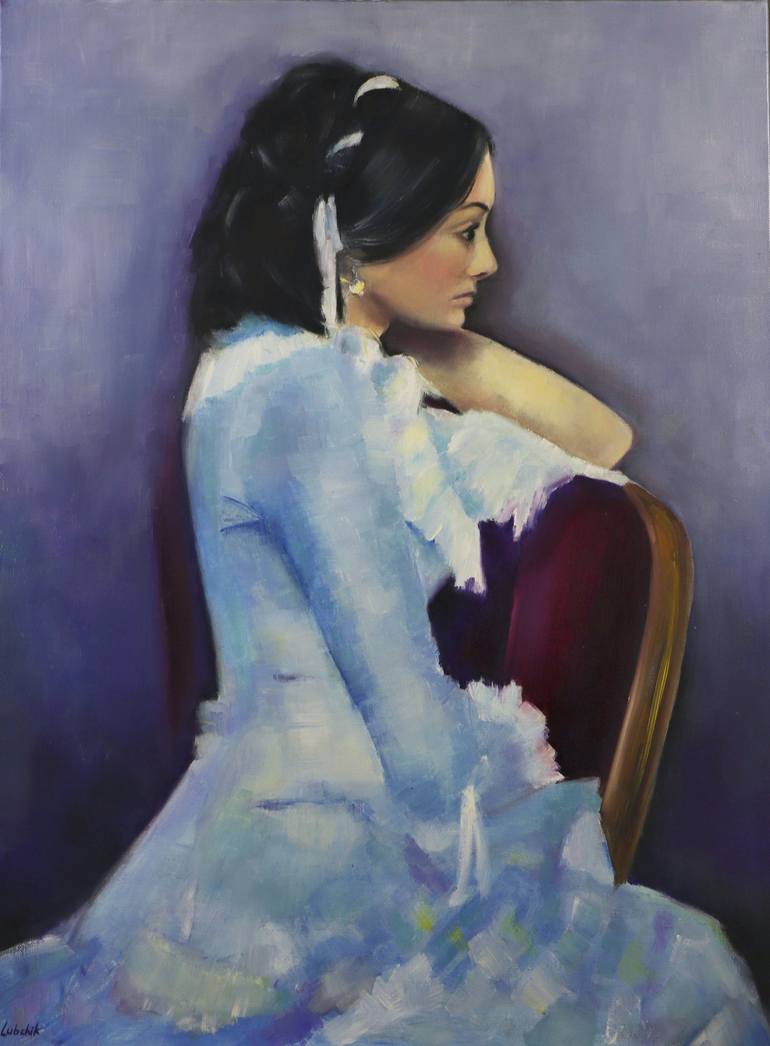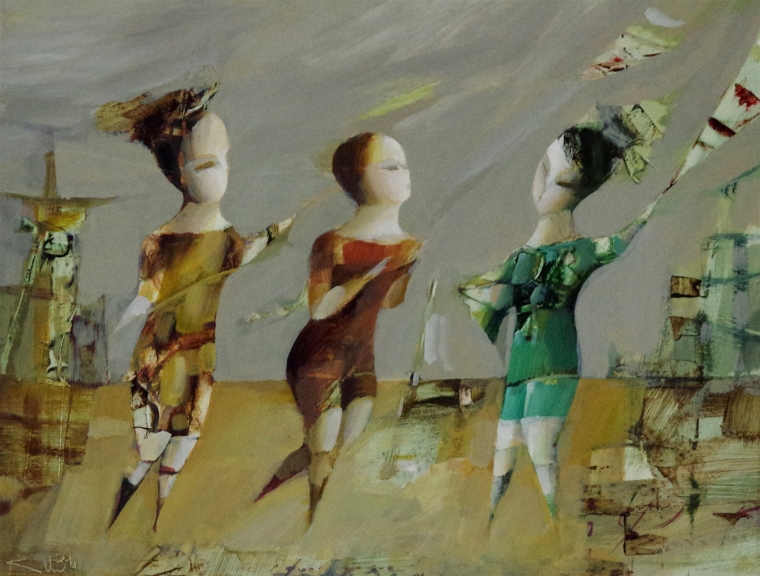Mastering Composition and Color in Figurative Oil Painting
Mastering Composition and Color in Figurative Oil Painting
Blog Article
A Trip Through the Globe of Figurative Oil Paint: Finding the Distinct Characteristics and Psychological Depth of the Tool

History of Figurative Oil Paint
Emerging throughout the late Center Ages and thriving throughout the Renaissance, figurative oil painting has an abundant background that mirrors both imaginative technology and social advancement. At first, oil paints were used in Europe as a way to improve the luminosity and depth of shade in art work. Musicians such as Jan van Eyck spearheaded the tool, demonstrating its potential to record detailed information and appearances, therefore enabling for a more natural depiction of the human type.
As the Renaissance progressed, renowned numbers like Leonardo da Vinci and Michelangelo broadened the boundaries of metaphorical oil paint. They emphasized physiological accuracy and perspective, developing works that conveyed feeling and narrative depth. The tool's adaptability allowed for trial and error with light and darkness, resulting in the growth of chiaroscuro methods that further improved the visual experience.
One-of-a-kind Attributes of the Medium
The advancement of figurative oil paint has been significantly affected by the unique features of the medium itself. Oil paint, made up of pigments suspended in oil, uses artists an exceptional flexibility that enables a wide variety of coatings and structures. Its slow-moving drying time makes it possible for precise mixing and layering, which can create depth and luminance unattainable in other tools.
Moreover, oil paint's abundant pigmentation supplies vibrant colors that keep their intensity in time. This particular is essential in metaphorical paint, where capturing the nuances of skin tones and psychological expressions is extremely important. The ability to accomplish refined gradients and soft transitions boosts the lifelike high quality of topics, permitting artists to communicate intricate moods.
In addition, oil paint sticks well to numerous surfaces, such as timber, canvas, and metal, expanding the range of creative expression. The tool's adaptability sustains various strategies, from detailed realistic look to meaningful brushwork, making it possible for musicians to discover their specific designs.
Ultimately, the unique buildings of oil paint not just enhance the visual experience yet also encourage artists to communicate extensive stories, making figurative oil painting a deeply expressive art type.
Techniques and Styles Employed
Within the world of figurative oil painting, musicians utilize a diverse selection of methods and styles that add to the depth and splendor of their job. One popular strategy is polishing, where transparent layers of paint are used over dried layers, permitting light to mirror and permeate, enhancing brightness and depth. This approach is typically used to attain a sense of realistic look and complexity in complexion.
Another strategy is impasto, where thick layers of paint are applied with a scheme knife or brush, developing a textured surface area that adds a three-dimensional top quality to the painting. This design can stimulate a visceral feedback, drawing the visitor in through its responsive nature.
Artists likewise discover different brushwork designs, from fine, in-depth strokes that record elaborate attributes to broader, a lot more expressive strokes that communicate activity and emotion (figurative oil painting). The option of shade palette substantially affects the overall mood of an item, with warm tones typically presenting feelings of comfort and trendy tones suggesting sorrowful
In addition, the integration of chiaroscuro, the contrast between light and darkness, permits artists to create remarkable results that enhance the narrative quality of their work. Each method Find Out More and design is carefully selected to elevate the customer's experience and understanding.
Emotional Depth in Figurative Art
Psychological deepness functions as a keystone in figurative art, allowing artists to transcend simple depiction and involve customers on an extensive degree. This psychological vibration is often achieved through the nuanced portrayal of human figures, expressions, and interactions. Artists harness the power of darkness, light, and shade to stimulate feelings that resonate deeply with the audience, developing a natural link to the subject issue.
In metaphorical oil paint, the complex layering of paint can show the intricacies of human emotion. The choice of palette, whether warm or cool, plays an essential role in establishing the state of mind and ambience of a piece. For example, softer hues may stimulate harmony and self-contemplation, while strong, contrasting shades can connect stress and drama.

Influential Artists and Their Functions
Numerous prominent musicians have substantially formed the landscape of figurative oil painting, each adding one-of-a-kind point of views and strategies that remain to influence modern creators. Among these artists, Lucian Freud attracts attention for his intense psychological depth and raw representation of the human kind, typically obscuring the lines in between beauty and decay. Freud's jobs, identified by thick, impasto brushstrokes, invite customers to challenge the intricacies of identification and vulnerability.

Likewise, Andrew Wyeth's precise realistic look in items like "Christina's Globe" records profound narratives within seemingly straightforward make-ups. His use light and shadow evokes a sense of fond memories and psychological vibration, attracting visitors right into the intimate worlds he portrays.
In the world of modern-day art, Kehinde Wiley has gained acknowledgment for his lively, larger-than-life portraits that test standard concepts of depiction. By positioning people of shade in contexts similar to classic portrait, Wiley's job redefines the canon of art history.
These article source musicians, together with others, have not only enriched figurative oil paint however have additionally broadened the discussion surrounding society, identity, and feeling, ensuring that the tool remains an essential type of expression in the art globe. figurative oil painting.
Final Thought
In final thought, figurative oil paint remains a click powerful tool that encapsulates the complexities of human emotion with its abundant coloring and versatile methods. The journey with metaphorical oil painting reveals its enduring value in the art globe.
The expedition of figurative oil painting provides a profound insight right into the interaction of strategy, feeling, and historic context that specifies this age-old tool. Oil paint, made up of pigments put on hold in oil, offers artists a remarkable adaptability that permits for a vast array of textures and finishes.Within the realm of metaphorical oil paint, artists use a diverse variety of strategies and styles that contribute to the deepness and richness of their work.Various prominent artists have significantly shaped the landscape of metaphorical oil paint, each adding special point of views and methods that continue to inspire modern designers.In final thought, figurative oil painting continues to be an effective tool that encapsulates the complexities of human feeling with its rich pigmentation and versatile techniques.
Report this page